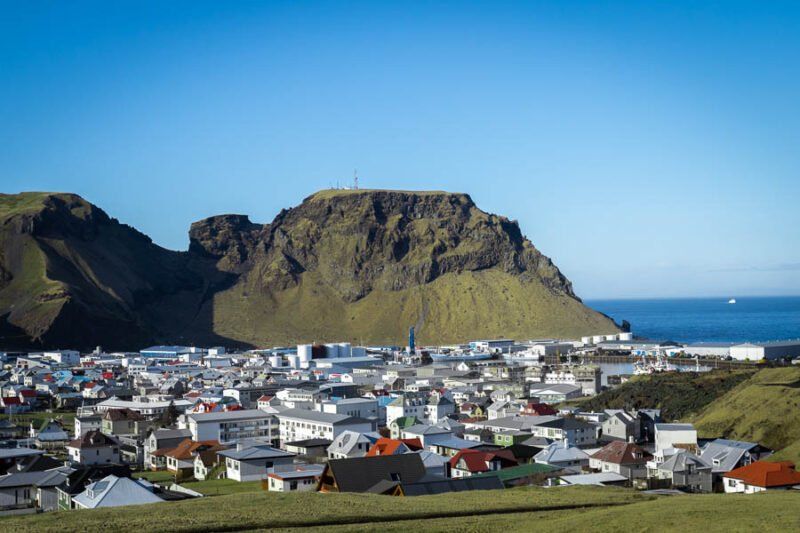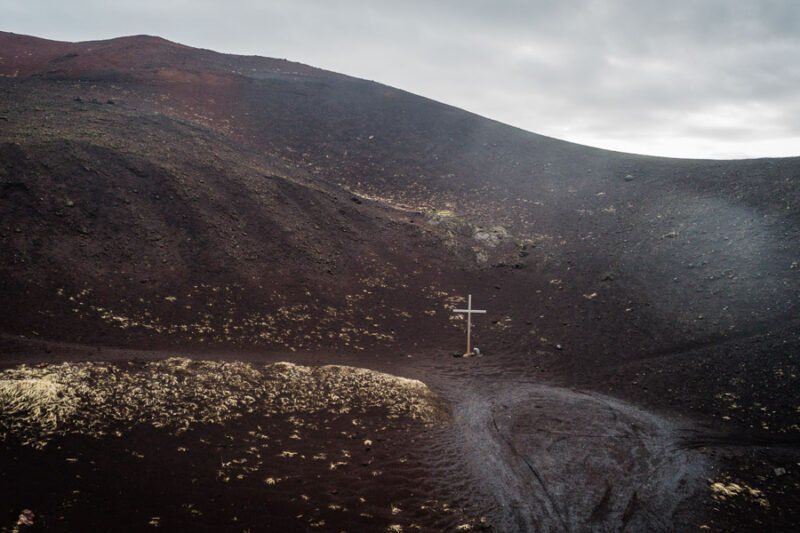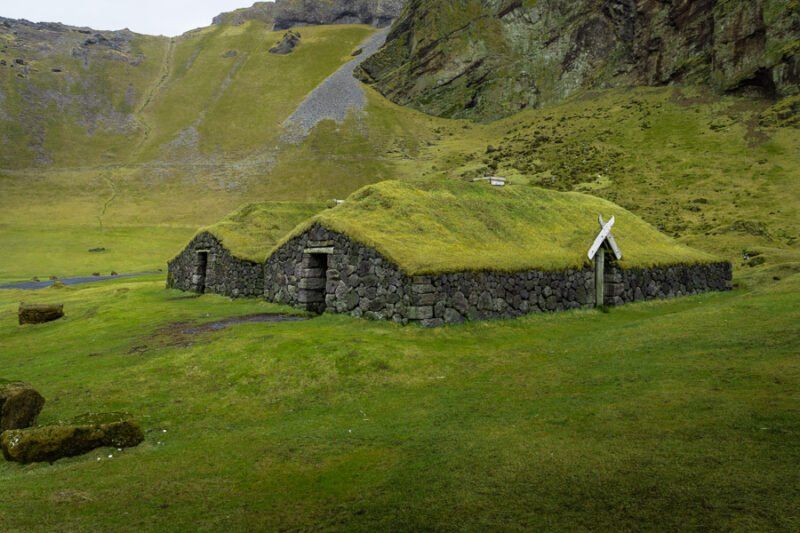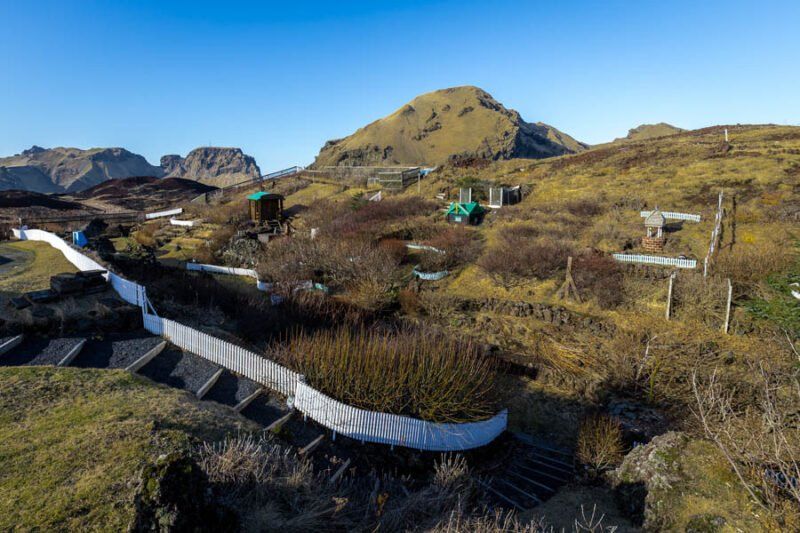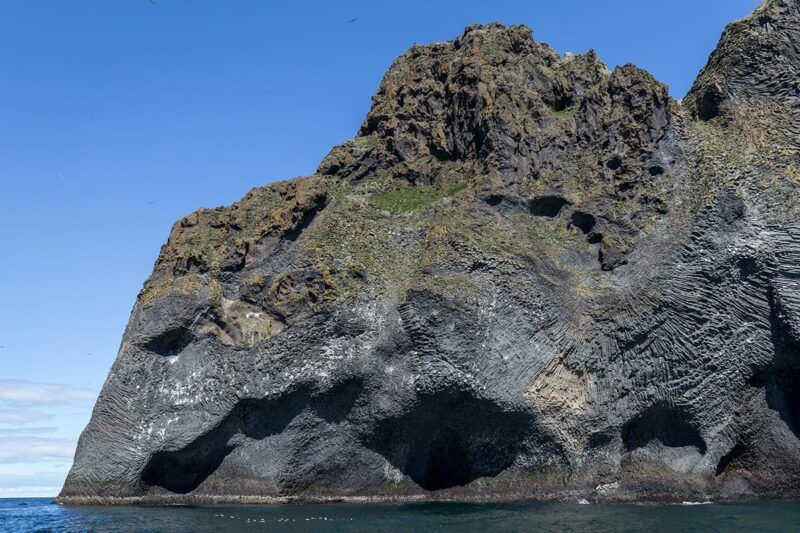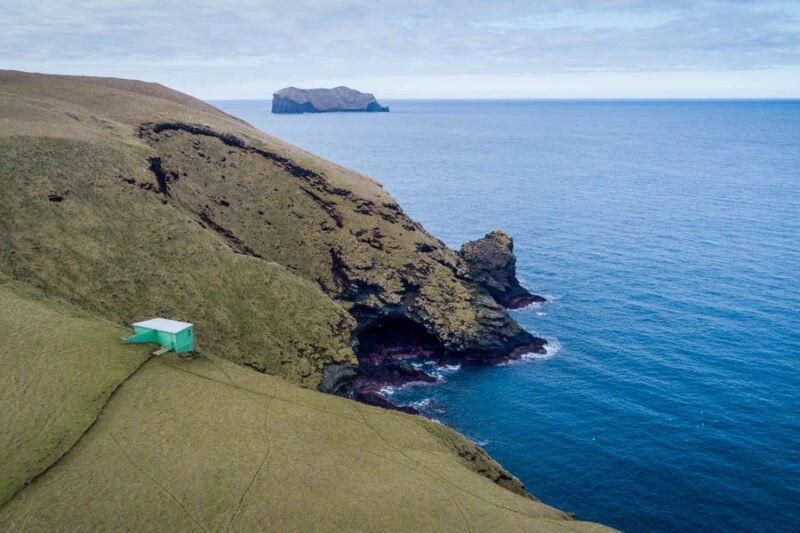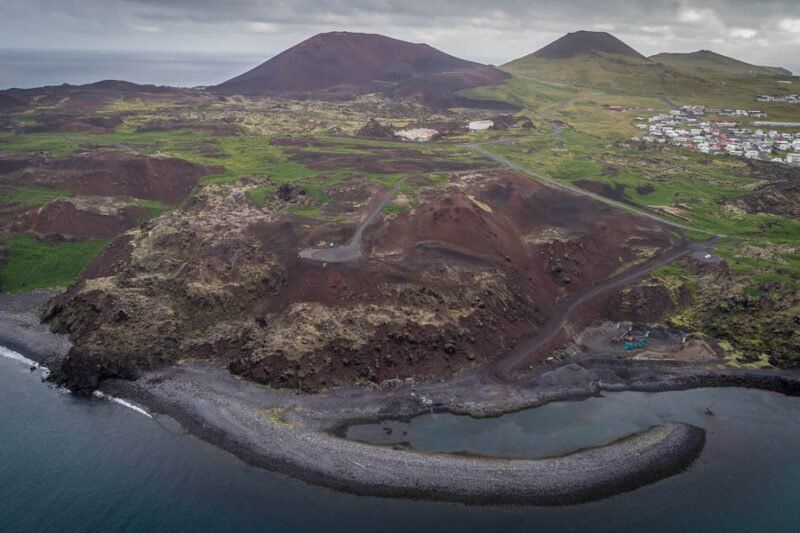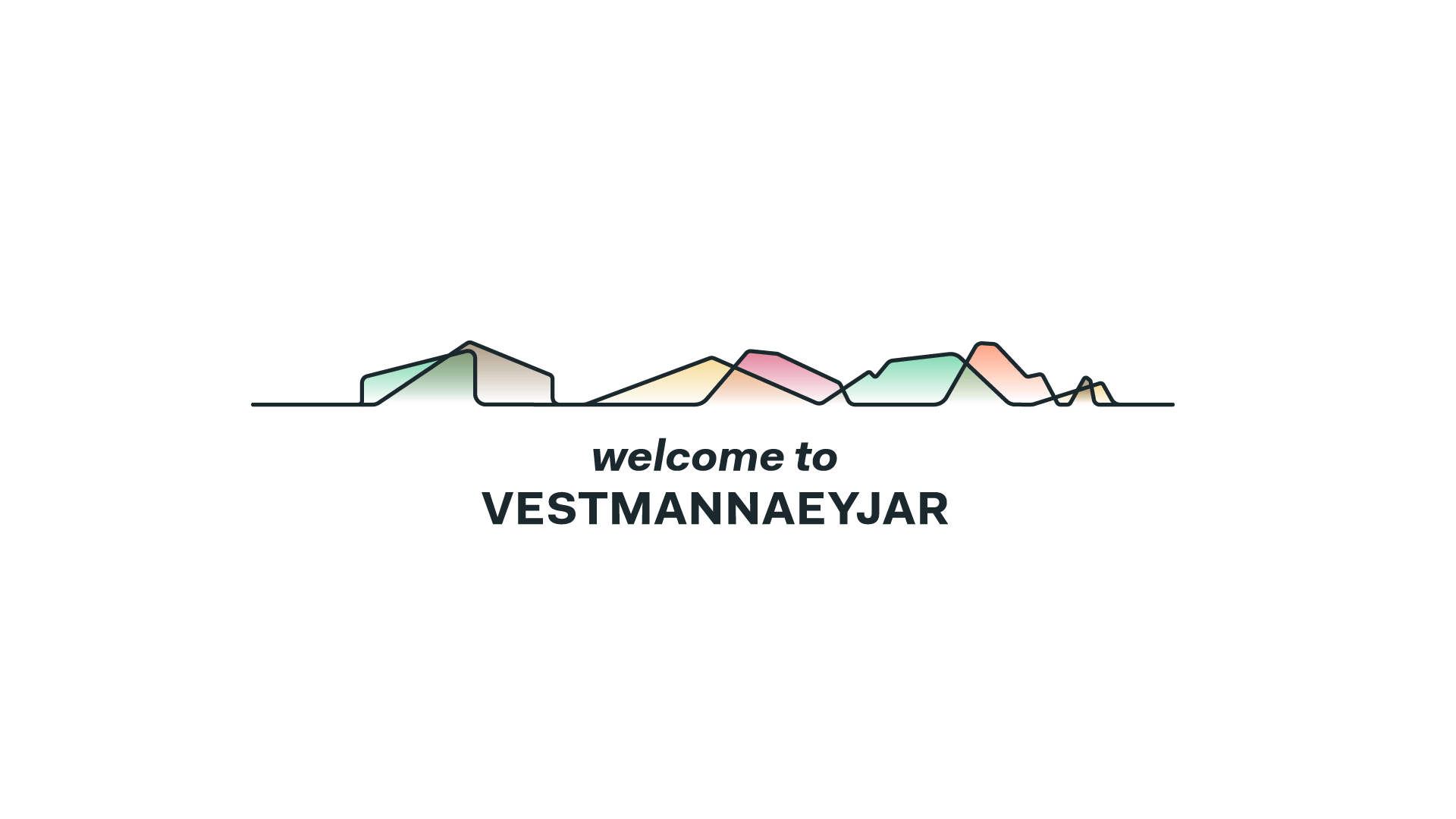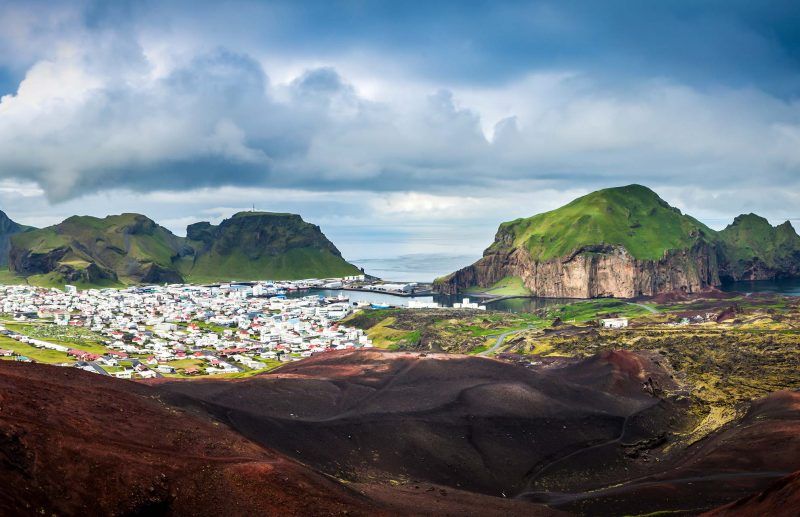Vestmannaeyjar, also known as the Westman Islands, is an archipelago off the south coast of Iceland. It consists of 15 islands and 30 skerries and sea stacks. Heimaey (“Home Island”) is the only settlement on Vestmannaeyjar that is inhabited year round.
The earliest sources on Vestmannaeyjar are from none other than Landnámabók (Book of Settlements), from the account of Ingólfur Arnarson, Iceland’s first settler. The book tells of how Ingólfur threw his high seat pillars overboard and vowed to settle wherever the gods brought them to shore, which eventually led him to Reykjavík. But before he made the terrible blunder of settling in Reykjavík, he spent one winter on Ingólfshöfði, a cape on the south coast. From there he set out in search of the pillars, but along the way he came across the body of his brother, Hjörleifur.
Hjörleifur had been slain by his Irish slaves, who Ingólfur spotted heading in the direction of the islands south of Landeyjar. At this time the Norse people referred to the Irish as “west men,” and therefore the islands were named Vestmannaeyjar (the Westman Islands). Ingólfur pursued the slaves and slaughtered them. These killings left such a big impression that many places around the archipelago are christened in their honor: Helgafell is named for Helgi, who was from there, and Duftþekja on Heimaklettur is named after the slave Duftþaki, because he was said to have jumped off when Ingólfur was trying to chop him.
The first settler of Vestmannaeyjar, however, was Herjólfur Bárðarson, who lived in Herjólfsdalur valley. In fact, he may have been the first person to party in Herjólfsdalur. Certainly not the last though, as Þjóðhátíð music festival attendees can attest. Longterm residence in Vestmannaeyjar began around 920; prior to that time no one had wanted to stay there over winter. According to Sturlubók, there was a fishing station on the islands, and indeed the locals have been fishing there more or less ever since.
Up until the 12th century, Vestmannaeyjar was owned by farmers. Just after 1400, the archipelago became privately owned by the King of Norway, and later the King of Denmark. The islands were a special domain and even had their own laws, different from the mainland’s. Some might say its remained this way ever since.
Vestmannaeyjar was property of the Crown throughout the Middle Ages until 1874 and was always the kingdom’s largest source of income. We would like more Icelanders to keep that in mind.
The population of Vestmannaeyjar has taken three large blows over the centuries. First, the population was halved when about 300 people were captured in the Turkish invasion in 1627. The second was due to a wave of infant deaths in the 18th century. Then in the 20th century, the Heimaey eruption of 1973 led to a mass evacuation, and for a period of six months the population dropped from 5,100 people to a mere 200.
Today, Vestmannaeyjar is home to around 4,300 people, and we’ve never been better.
Places of Interest
